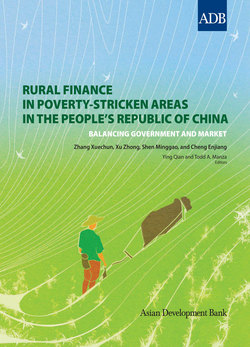Читать книгу Rural Finance in Poverty-Stricken Areas in the People's Republic of China - Xuechun Zhang - Страница 25
На сайте Литреса книга снята с продажи.
Creation of Postal Savings
ОглавлениеA third reform was the creation of postal savings, which had been removed from China Post in 1953. In 1986, upon the approval of the State Council, the function of postal savings was resumed. The Postal Savings and Remittance Bureau was set up within the postal system, and the postal management bureaus of various provinces, autonomous regions, and municipalities established corresponding agencies. The Ministry of Posts and Telecommunications and the PBC announced the agreement on launching postal savings and outlined their respective capacities as investor and operator. The agreement first took effect in 12 cities, including Beijing and Tianjin, to explore a legal framework for developing the business all over the PRC.
Rural credit unions had the right to appoint and dismiss RCC senior management and to approve both loans and expenditures
After China Post resumed the postal savings business, it became an important part of the financial arena, taking deposits but not extending loans. In rural areas, it also facilitated savings and remittance. Initially, the postal savings outlets served as agents of the PBC, and postal savings deposits were redeposited in the PBC at a monthly commission of 0.22%. During the highinflation period of the 1980s and early 1990s, postal savings played a positive role in absorbing funds and withdrawing cash from circulation. The PBC paid interest on postal savings in addition to its commission. Later, the commission was changed to a savings-interest spread.
Due to the high interest rate and the risk-free nature of deposits with the central bank, postal savings offices were motivated to take deposits from the public
After 1990, postal savings branches collected savings on their own and transferred deposits to the PBC at relatively high interest. The interest rate on deposits of postal savings in the PBC was 4.13%, whereas the interest rate on commercial banks’ reserve with the PBC was only 1.89%. Due to the high interest rate and the risk-free nature of deposits with the central bank, postal savings offices were motivated to take deposits from the public. Some of them even paid high interest rates themselves, to attract savings. As a result, postal savings offices expanded rapidly.
However, the high interest rate on postal savings deposits with the central bank resulted in an outflow of rural funds, distorted the interest rate structure, and encouraged irregular operations on the part of the postal savings offices. The shutdown of ABC outlets at the township level and the closure of rural cooperative foundations left RCCs as the principal source of credit in rural areas, but the rapid development of rural postal savings offices took available savings away from RCCs. In extreme cases, farmers in certain townships deposited money with postal savings offices while applying for loans with RCCs, weakening the ability of RCCs to provide loans.
